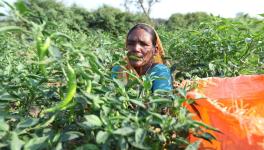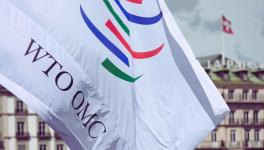US Food Security Double Standards
Seven decades ago, the US provided a major fillip to international initiatives to eradicate hunger when the Roosevelts initiated creation of the Food and Agriculture Organization of the United Nations. Three decades later, the same spirit ensured bipartisan support for the 1974 World Food Summit.
India’s food distribution system was introduced decades ago. Large-scale survey data shows that it was responsible for taking 38 million people out of poverty in 2009-10. India’s food security and stockholding programs use the same policies that the United States used in its early farm policy from the Great Depression, utilizing price supports, food reserves, administered markets and subsidies. The US used these measures, but now seeks to prevent other countries from using them.
Food security
The US spends about $75 billion yearly for its Supplemental Nutrition Assistance Program (SNAP), the main domestic food aid program. SNAP entitles about 47 million beneficiaries to buy, on average, 240 kg of grain valued at $1,608 per year.
Before expanding its food security program, India was reaching 475 million much hungrier people with food aid of just 58 kg of grain per person, valued at roughly $27 per year. Compared to the US program, India’s food security program has ten times as many beneficiaries, and provides the equivalent of less than a quarter of the amount of grain, at a sixth of the cost per person.
Reference Prices
India’s administered prices for farmers are calculated as subsidies by comparing them not to market prices in India, but to an international “reference price” for 1986-88. The 1986-88 reference prices were especially low because the US and the EU were then ‘dumping’ huge food surpluses on the international market, pushing down prices.
Despite the recent decline of cereal prices internationally, food price inflation since 1986-88 has been very considerable, so any price support today will look much higher, involving much greater subsidies. Inter alia, India has asked that the reference price be updated for inflation, so its administered prices can be reasonably compared to current market prices.
Trade Distortions
The allowed levels of trade-distorting support – the Aggregate Measure of Support (AMS) – for the US is about $19 billion. The level was set in 1994, based on prevailing high levels of trade-distorting support, and has been reduced by only a fifth since then. Like 61 of the 71 developing country WTO members at the time, India’s AMS was zero.
Most foreign observers agree that the US has been underreporting its trade-distorting subsidies for years. A WTO dispute panel ruled that insurance subsidies and direct payments should count as trade-distorting subsidies because they go to producers of a defined set of crops. If corrected, US AMS notifications for 2010, for example, would rise from $4 billion to $15 billion.
The WTO’s “Green Box” is supposed to include ostensibly ‘non-trade-distorting’ subsidies. About $120 billion of the US’s $130 billion spent annually on food programs and farm supports are considered Green Box subsidies, much greater than for other countries with larger populations.
Most US subsidies – AMS and Green Box – go to crops -- like maize, soybeans, wheat and cotton -- which are exported. Maize and soybeans are also used for livestock feed, while maize is the main input for US bio-ethanol. As the US exports both meat and ethanol, input subsidies should be reported as trade-distorting, but this is not done.
With higher and much more volatile global prices as well as local shortfalls in production due to increased extreme weather events in recent years, there has been a revival of interest in food stockholdings, especially in developing countries. India’s procurement and stockholding program is for domestic consumption, and does not subsidize exports. But to be sure, restrictions can be imposed to prevent trade distortions due to subsidized exports.
In 2005, the WTO committed to resolve the issue of the US’s trade-distorting cotton subsidies, which hurt many of the world’s poorest farmers, “in an expedited manner”. A decade later, however, cotton producers the world over are still awaiting US compliance.
Over the last two decades, WTO restrictions and pressures from some international finance institutions have forced many developing countries to scale down or even end their food distribution programmes, with often disastrous consequences for its beneficiaries.
Peace Clause?
In 1994, the US and the EU imposed a Peace Clause at the end of the protracted Uruguay Round of trade negotiations to protect themselves from WTO suits over their hugely distorting subsidies for nine years.
The 2013 Peace Clause offered to India and the G33 group of developing countries does not allow expansion of existing programmes, let alone new food distribution programmes. Its validity beyond 2017 is unclear in the event that outstanding issues remain unresolved.
Although the US does not acknowledge the ‘right to food’, many food security innovations adopted by the international community have their origins in the US. Yet, it continues to obstruct developing country programmes crucial for protecting the world’s poor against hunger and food insecurity.
(Jomo Kwame Sundaram is with the Food and Agriculture Organization and Vikas Rawal is with Jawaharlal Nehru University.)
Disclaimer: The views expressed here are the author's personal views, and do not necessarily represent the views of Newsclick.
Get the latest reports & analysis with people's perspective on Protests, movements & deep analytical videos, discussions of the current affairs in your Telegram app. Subscribe to NewsClick's Telegram channel & get Real-Time updates on stories, as they get published on our website.
























